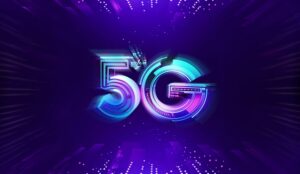Jean-Luc Antoine, on behalf of Odigo, discusses how 5G will revolutionize the customer experience through enhanced and collaborative video capabilities.
Many of us are aware of 5G’s potential in terms of customer service relations, and would have anticipated, in early 2019, the need to prepare these services, as 5G rolled out in the UK.
When thinking about this, two lines of thought became clear:
- A focus on infrastructure-related services, with slicing capabilities, bandwidth, IoT, etc.,
- A focus on service geared toward the end customer.
While both of have significant implications, let’s take the time to really explore this second option.
Service Geared Toward the End Customer
When thinking about service geared towards the customer, the possible uses of video integration in managing customer interactions becomes an interesting point of consideration.
5G will allow customers to load content almost instantly while retaining the best quality, not only improving existing services but also developing new ones.
5G: Enhanced Video to Revolutionise the Customer Experience
Currently, the video stream, which is extremely data-intensive, is not being used to its full potential.
Thanks to 5G, it will be possible to leverage it for high value-added uses. In fact, for the first time, high and very high definition audiovisual content (4K video, 3D video, etc.) will be possible for every 5G phone owner.
Add to this, the Open CTI coupling capabilities of the Salesforce platform – with its pop-up sheets on linking, log-on-call communication purposes, etc. – and enhanced video can become a new channel of interaction in its own right.
What would it look like? Looking at the news will give us an idea: as the presenter speaks, a banner with text scrolls at the bottom of the screen and inlays of images, even video, illustrate the subjects. In terms of customer experience, 5G will make it easy to do the same with customer information and context during a video call.
The next step? Add a layer of interaction management and rework these embedded elements by making them operable. Welcome to the world of enhanced video!
Imagine a customer who wants to take out a loan by phone. If they are not inclined to use self-service, they will be able to talk to an adviser who can help them configure their loan.
Thanks to this technology, it will become possible for them, wherever they are, to easily vary amounts and/or durations on the screen of their 5G phone.
All this while talking directly with an agent available to answer their questions and guide them through the process.
5G: The Era of Collaborative Video
With 5G, it will be possible to build a screen from scratch – through the mixing of agent and customer video streams, but also customer data – so visual representation will be identical on both the customer and agent sides.
Indeed, what will be displayed on the customer’s screen will be included in the user interface. The agent will therefore be able to unfold, fold, and interact with this visual representation on their screen with ease.
Contrary to the trend towards dehumanisation on interaction channels, this technology, if properly used, will make it possible to put human back at the centre.
Tomorrow More Advanced Features Will Be Available
More advanced features may be offered depending on the use. Within the tourism sector, for example, this could eliminate communication problems between tourists and customer service agents.
Tourists will be able to express themselves in their native language and agents will understand, in real-time, what they are saying and be able to respond accordingly. How is this possible? Thanks to a combination of speech-to-text, machine translation, and text-to-speech.
With the reverse functions, the agent will answer them in English, but tourists will receive the answer in their native language.
And, going one step further, other functionalities could potentially make it possible to gauge a customer’s mood by analysing the video stream (image) and/or the audio stream (intonations).
Easy to Set Up
This technology will use the phone’s native video stream injection capabilities. So, we’re talking about an immersive full-screen experience that doesn’t require installing a client-side mobile application.
The only necessary programming will be to visualise all the interactions that are projected within the video (dynamic effects of appearance and disappearance of inlaid elements, reaction on the gestures, etc.).
There will also be nothing to install on the agent’s side either. The only requirement will be to have a webcam available.
Admittedly, in terms of infrastructure, a good network remains essential to handle the video bandwidth. As a prerequisite, the contact centre will therefore have to ensure that it has sufficient data rates for this type of channel.
In terms of operating costs, the implementation of an intermediate signalling server – allowing the connection between the mobile phone and the contact centre agent – will be necessary. This cost will depend on the number of communications.
The Difficulty of Properly Calibrating the Service
Since we are talking about something based on technologies natively available on the phone, the challenge is not so much technical. The real difficulty lies in the fact that these are disruptive services of which corporate customers may have difficulty conceiving the potential.
It will be necessary to ensure the tailor-made service offers are well calibrated to correspond to the uses of tomorrow.
These potential use cases are not known today. Correctly identifying the chosen use will therefore be something of a gamble.
For this reason, adjustments will be necessary in order to provide an increasingly enhanced user experience, using levers that weren’t necessarily initially identified.
New Interaction Channel = New Uses
In short, this new channel will allow a multitude of new use cases in terms of assistance, support, or sales in many sectors.
This type of service, with increased interaction capabilities, will bring consumers and brands even closer.
Author: Guest Author
Published On: 3rd Mar 2020
Read more about - Guest Blogs, Odigo





































